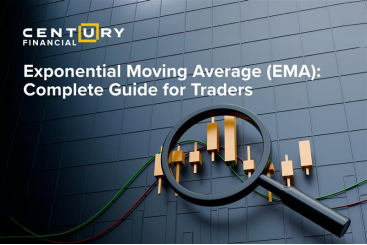
.jpg)
2024 is not just an election year. It’s perhaps the election year.
Out of the election taking place in 64 countries representing a combined population of about 49% of the people in the world we will discuss an analysis of two most important democratic countries running for elections and how it would affect the Trading markets.

.png)

Election over multiple months

Others countries for which dates are yet to be announced

before September

before October

November

Presidential in December
.png)
Second-half of the year
Sources: National electoral bodies; Reuters reporting; International Foundation for Electoral Systems Sumanta Sen • April 5, 2024 | REUTERS
.png)
The Indian general elections, which will take place from April 19 to June 1, 2024, are a monumental event. They surpass previous records and last 44 days. Prime Minister Narendra Modi, who has completed two terms, is running for a third consecutive term, which could significantly influence the Indian market.

Source: ACE Equity
Historical Context and Market Response
In the 2014 and 2019 elections, Modi’s BJP-led coalition secured decisive victories, resulting in substantial market rallies and heightened investor confidence. Stability and the expectation of economic reforms under Modi’s leadership have historically driven market gains. The Indian Markets had fallen un 2020 due to COVID-19 Pandemic. On 28 February 2020, Sensex lost 1448 points and Nifty fell by 432 points.
Which sectors or industries are expected to boom?
The policies proposed by the winning party could notably affect specific sectors. Infrastructure, defence, and renewable energy might benefit from increased government spending, while banking and telecom could face regulatory shifts. Investors must understand these potential changes to make informed decisions.
Some of the sectors which gained positive movement due to Modi-2 were : Agricultural Sector, Infrastructure and Real Estate, Financials and Consumption
Personality and popularity of the leader?
The personality and popularity of the Prime Ministerial candidate can also influence market sentiment during elections. A leader perceived as pro-business and reform-oriented can boost investor confidence and drive positive market reactions. In contrast, a leader with a more populist or socialist agenda may lead to initial market volatility.
Historically, the VIX has risen to as much as 29 before elections, indicating heightened market sensitivity.
Example: In 2019
Election dates: 11/04/2019 – 19/05/2019
During the elections of 2019, we see an up move in the volatility index (observe the blue channel highlighted in the graph above). This time, it reached a peak around 30 by 20th May 2019.

Post which, on the day of results declaration, Vix experienced a drop(as seen in 2014 elections as well), eventually reaching the range of 13-15 at the end of July 2019.
Nifty 50’s performance during 2019 elections-

The Prime Minister said the more common citizens enter the stock market, the stronger the economy. “I want the risk-taking capacity of our citizens to grow.”
The historical performance of the Nifty 50 during previous election cycles unveils intriguing trends. Notably, the index consistently exhibits a positive trajectory in the six months leading up to elections, often characterized by double-digit gains.
.png)
The 2024 United States presidential election will be the 60th quadrennial presidential election, set to be held on Tuesday, November 5, 2024. Voters will elect a president and vice president for four years. Incumbent President Joe Biden, a member of the Democratic Party, is running for re-election. His predecessor, Donald Trump, a member of the Republican Party, is running for re-election for a second, non-consecutive term after losing to him in 2020.

Source: FactSet Financial Data & Analytics
Comparing Economic Policies: Trump vs. Biden
The economic policies of Trump and Biden present a stark contrast, reflecting their divergent visions for America’s future. Under Trump’s administration, the focus was on deregulation and tax cuts, as evidenced by the 2017 Tax Cuts and Jobs Act, aiming to stimulate economic growth by reducing the tax burden on corporations and individuals.
Trump’s approach also emphasized “America First” trade policies, including import tariffs to protect domestic industries. Conversely, Biden’s tenure has been marked by significant government spending to recover from the COVID-19 pandemic, with the Inflation Reduction Act and Infrastructure Investment and Jobs Act at its core. Biden’s policies seek to bolster the economy through investment in infrastructure, clean energy, and social services, funded by proposed tax increases on the wealthiest Americans and large corporations.

The upcoming presidential election follows tumultuous pandemic years, with voters fed up with inflation, shrinking wages, and a looming recession. The new administration faces tough choices between stimulus, risking inflation, or implementing structural changes. Markets will react swiftly, with sectors responding to policies protecting growth or controlling prices. Voter sentiments will signal which industries might win or lose, guiding strategic traders.

Since its inception in 1957, the S&P 500 has seen varied returns under different presidents. During Donald Trump's term, it achieved a 14.1% annual return, surpassing Joe Biden's current 8.7%. Both parties can claim superior S&P 500 performance: the average CAGR is 6% under Republicans and 9.5% under Democrats, but the median CAGR is 10.2% for Republicans and 8.2% for Democrats.
However, past performance doesn't guarantee future results. The S&P 500's success under Trump doesn't ensure a repeat if he is re-elected.
Today's higher inflation and interest rates create a different macroeconomic environment, impacting consumer spending, business investments, and corporate earnings. Therefore, investors should focus on the broader economic context rather than political leadership. Historically, the S&P 500 averages about a 10% annual return over long periods
Bottom line
Don’t let the political noise distract you from your investment strategy.
Your investment portfolio should be built to weather different political and economic cycles. Active traders can profit by diversifying positions among volatile stocks, focusing on outcomes rather than election loyalty.
Elections can rapidly change direction, requiring close monitoring of global events. Surprise rate hikes, sanctions, or geopolitical tensions could disrupt market cycles. Heated contests increase the likelihood of an undecided winner, amplifying uncertainty.
This marketing and educational content has been created by Century Financial Consultancy LLC (“Century”) for general information only. It does not constitute investment, legal, tax, or other professional advice, nor does it constitute a recommendation, offer, or solicitation to buy or sell any financial instrument. The material does not take into account your investment objectives, financial situation, or particular needs.
The opinions expressed by the hosts, speakers, or guests are their own and may change without notice. Information is based on sources we consider to be reliable; however, Century does not guarantee its accuracy, completeness, or timeliness and accepts no liability for any loss arising from reliance on this content.
Trading and investing involve significant risk, and losses may exceed initial deposits. Past performance is not indicative of future results. CFDs and other leveraged products are complex instruments that may not be suitable for all investors. Please ensure you understand how these products work, the associated risks, and seek independent professional advice if necessary.
Century is licensed and regulated by the UAE Capital Market Authority (CMA) under License Nos. 20200000028 and 301044.
Please refer to the full risk disclosure mentioned on our website.




__1439480927.jpg)




.png)
.png)
.png)
.png)


